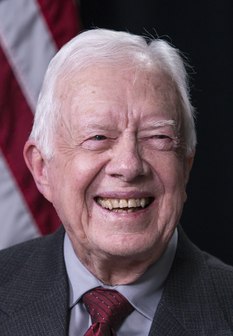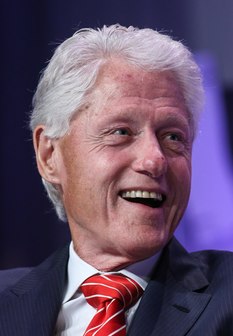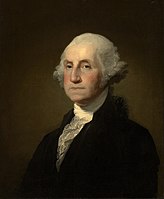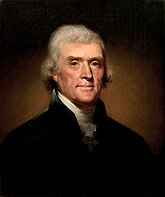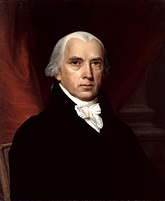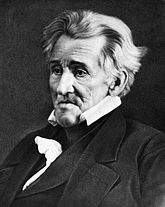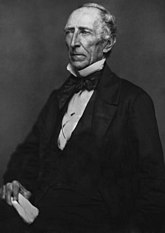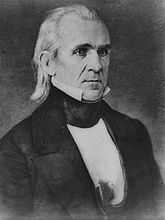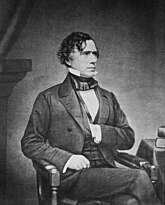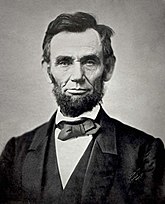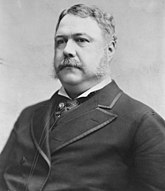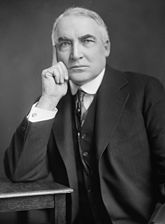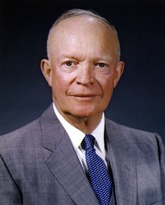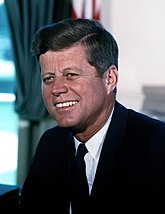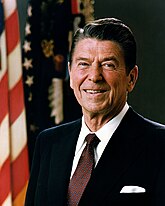The fire in the tobacco barn was starting to rage, and inside was the most wanted man in America: John Wilkes Booth, the traitor who had shot President Abraham Lincoln at Ford’s Theatre 12 days earlier.
Nursing a broken leg, Booth had made it 73 miles to Port Royal, Virginia, with federal troops in pursuit. Now the last of his accomplices had deserted him and he was cornered in the barn, surrounded by Union Army veterans hungry for vengeance. He had two choices: shoot his way out or surrender and face his crime.
A soldier by the name of Boston Corbett would decide the matter for him.
Corbett was watching Booth intently from his unit’s formation around the barn. Through the cracks in the wall, he could see the fugitive shift in and out of view, a gun in hand. As the flames rose, Corbett trained his pistol on the image, even though the word from Washington was clear—Booth was to be taken alive.
Corbett, you see, wasn’t the kind of soldier who followed orders easily, unless they came from God. He was a fervent Christian, and his faith had seen him through four years of battle, not to mention a punishing stint in one of the harshest Civil War prisons. He was ready for the fight to end.
Boston Corbett. Photograph by Mathew Brady/Library of Congress
He walked closer to the fire, which a comrade had lit in an attempt to shake the fugitive loose, and stopped just paces away from the barn. Then he watched as Booth appeared to make up his mind by pointing his gun outside toward the Union troops, as if to fight his way out.
That was all Corbett needed to see. He defied Washington’s orders and pulled the trigger. Booth fell to the ground, and hours later he was dead. Boston Corbett thus became Lincoln’s Avenger: the man who killed the man who killed the President.
As positions of historical prominence go, it’s a rarefied one. Three US Presidents were murdered after Lincoln, but only one of the assassinations—John F. Kennedy’s—was followed by a similar (and much more storied) reprisal. Two days after Lee Harvey Oswald shot Kennedy in Dallas in November 1963, Jack Ruby killed Oswald with a .38 snub-nosed revolver on live television.
Ruby was a loosely mobbed-up nightclub owner who claimed he’d done it to save Jacqueline Kennedy from having to endure the pain of a long murder trial. Corbett had a less shady but still unorthodox past—he was a hat maker with a strong religious streak who claimed God had commanded him to bring Lincoln’s killer to justice. Ruby went to prison; Corbett didn’t.
But a peek at the pages of history—into old newspaper clippings, correspondence, and records held at the Kansas Historical Society in Topeka—reveals how much the assassins’ assassins had in common. Like Ruby, Corbett ended up vilified after his unilateral action denied the public the chance to learn the full truth about the plot to kill the President. And Corbett, too, became fodder for conspiracy theories that followed him to his own strange end.
• • •
Boston Corbett’s curious life began ordinarily enough. As a young man named Thomas Corbett, smallish with black hair and black eyes, he toiled in the hat trade in the Northeast, an honorable profession for a first-generation American in the mid-19th century. But the arc of Corbett’s future shifted dramatically when his wife and first child died during the girl’s birth.
Corbett became unhinged, seeking solace in the bottle. He staggered up and down New England, until one night in the late 1850s when he happened upon an animated scene on a Boston corner. A street evangelist was holding court, and Corbett was mesmerized by the message of God. He became a regular at sidewalk churches around the city, peppering street preachers’ prayers with boisterous refrains of “Glory to God!” and “Come to Christ!”
A certificate of Corbett’s baptism as a born-again Christian, courtesy of Kansas State Historical Society.
The ministers eventually encouraged him to stake out a corner of his own, not so much because the young man had potential but to keep his annoying chorus at a distance. Corbett, now 26, took the advice. He would swear off liquor and grow his beard and hair long, styling himself in the image of Jesus. He also surrendered himself to a baptism by a Methodist minister—and was born again as Boston, in recognition of the town that saved him from the drink.
His rash tendencies exhibited themselves in strange ways. One day while he was ministering in the summer of 1858, Corbett was ogled by a pair of prostitutes, and the lower half of his body responded invitingly. He went home, took a pair of scissors, snipped an incision under his scrotum, and removed his testicles, then headed out to a prayer meeting.
In the Bible, Matthew 19:12 quotes Christ as saying “there are eunuchs who have made themselves eunuchs for the sake of the kingdom of heaven.” Corbett made himself a eunuch and didn’t check himself into Massachusetts General Hospital until he’d finished his prayers, had a full dinner, and taken a light stroll through the city that evening.
• • •
Weeks after healing, the castrated hat maker moved to New York City and resumed his trade. He remained a zealot, often attending the lunchtime prayers of the YMCA’s Fulton Street meetings. Corbett’s pious impulses were also what drew him into uniform. In 1861, amid the Confederate attack on Fort Sumter, Corbett enlisted in the Northern army, telling the women at his church that when he came eye to eye with his gray-suited enemies, “I will say to them, ‘God have mercy on your souls’—then pop them off.”
Corbett’s hat-finisher traveling card, courtesy of Kansas State Historical Society.
His Jesus locks shorn, Corbett managed to conform to the military’s uniform and grooming standards and was by most accounts a decent shot. But he never put country before God—and his religious rebelliousness was no match for even the hardest of commanders. During a drill in New York’s Franklin Square, Colonel Daniel Butterfield (famous for composing the military taps) was livid at his troops’ improper formations and gave them a tongue lashing laced with profanities. Corbett, who had yet to see a second of fighting, barked back: “Colonel, don’t you know you are breaking God’s law?”
Astonished, Butterfield sent Corbett to the guardhouse jail, where the soldier proceeded to one-up his commanding officer by singing hymns at the top of his lungs. Butterfield sent a messenger to warn the impetuous prisoner to stop it or else. Corbett kept on singing.
When Butterfield finally offered to release Corbett in exchange for an apology, Corbett responded, “No, I have only offended the colonel, while the colonel has offended God, and I shall never ask the colonel’s pardon until he himself has asked pardon of God.”
Exasperated, Butterfield sent his last order: Release Corbett from jail.
• • •
Four years of war later, as the North was celebrating the South’s surrender, a stage actor and Rebel sympathizer named John Wilkes Booth snuck into Lincoln’s box in the balcony of Ford’s Theatre in Washington. The President and his wife were watching a comedy, Our American Cousin. Booth grabbed his .44-caliber derringer pistol and shot Lincoln in the back of the head.
“Sic semper tyrannis!”—Thus ever to tyrants!—Booth shouted in Latin as he stole for the exit. After an overnight vigil, the President died early in the morning. By then, Booth had escaped into the night.
April 15 marks the 150th anniversary of Lincoln’s murder by John Wilkes Booth. Reward Poster by Universal History Archive/Getty Images
Even half crippled—he had leapt from the balcony to the stage, caught his spur on the bunting, and broken his leg—Lincoln’s killer eluded capture. Ten days after the assassination, the assailant was still nowhere to be found. To hunt the traitor, the government turned to the 16th New York Cavalry, the men who’d battled the infamous Confederate colonel John Mosby’s raiders. It was Boston Corbett’s unit.
Corbett was by now a hardened combat soldier. He had reenlisted three times, surviving traumatic events that had felled other men. Back in June 1864, while hunting Mosby’s men, Corbett had found himself cornered by the so-called Gray Ghost’s troops near Centreville, Virginia. His fellow soldiers were “nearly all compelled to surrender,” according to Harper’s Weekly, but not Corbett. He “stood out manfully, and fired his revolver and 12 shots from his breech-loading rifle before surrendering. . . . Mosby, in admiration of the bravery displayed by Corbett, ordered his men not to shoot him.” Instead, Corbett was sent to Andersonville, the most notorious Civil War prison.
Andersonville, in south-central Georgia, was built for 10,000 captives but held some 32,000 at its peak—almost a third of the men who ended up in the disease-ridden prison never made it out. When he was paroled in November of 1864, Corbett and another Union fighter were the only POWs from their unit to survive the ordeal. And barely so. Corbett left with scurvy and intermittent fever, rheumatism, and “bloody flux,” otherwise known as dysentery, a wartime ailment deadlier than combat.
Corbett spent some time recuperating at a hospital in Annapolis, then rejoined his regiment. Within a few months, the war was over. Lincoln was dead, his killer on the loose, and officials in Washington were apoplectic. During a church service several days into the dragnet, the head of the congregation asked Corbett to lead the flock in a blessing. “O Lord, lay not innocent blood to our charge,” the 33-year-old sergeant prayed, “but bring the guilty speedily to punishment.”
Not long afterward, volunteers from the 16th Cavalry regiment, led by Lieutenant Edward P. Doherty, prepared to go south into Virginia and hunt down John Wilkes Booth. Corbett was one of them.
• • •
The detachment left Washington via steamer on April 24 and headed about 50 miles down the Potomac to a landing at Belle Plain, Virginia. After a day of fruitless searching, the volunteers received a tip from a fisherman and his wife that men fitting Booth’s and his accomplice David Herold’s descriptions had crossed the Rappahannock River and were headed toward Bowling Green in Virginia’s Caroline County. The same informants suggested that the men were aided by a soldier named Willie Jett, who happened to be sweet on the daughter of a certain innkeeper in Bowling Green.
It was now midnight on April 26. After knocking on several doors there, Doherty’s men found Jett at a hotel and rousted him from bed. Jett wasn’t about to give up Booth and Herold, but Doherty informed him that he “should suffer” if he didn’t do so. Jett agreed to lead them 12 miles to land near Port Royal owned by a farmer named Richard Garrett, where Jett had left the men two days earlier.
“Arriving at Garrett’s Farm,” Corbett later wrote, “the lieutenant said to me, ‘Mr. Booth is in that house, ride through the command, and see that every man’s pistol is in readiness for use.’ ”
When Doherty asked after the fugitives, Garrett claimed they were in the woods. Doherty didn’t buy it. So, as he later told the Washington brass, he “seized this man by the collar, and pulled him out of the door and down the steps, put my revolver to his head and told him to tell me at once where the two assassins were; [Garrett] replied, ‘in the barn.’ ”
It was after 2 AM by now. Doherty’s men descended on the tobacco barn and formed a ring around it, Corbett included. From inside, Booth was trying to talk himself out of the jam. “Captain, draw off your men fifty yards!” Booth shouted, according to a soldier in the 16th Cavalry. “A cripple as I am with only one leg and cannot walk without a crutch. I would like a chance for my life.” Doherty refused.
It was dark, but there were cracks in the barn walls, and from his position, Corbett claimed to have eyes on their shifty target—he wanted to charge the barn himself. But when he asked for permission to try flushing the assassin out into the open, he was denied.
Meanwhile, the back-and-forth between Booth and Doherty continued for an hour, until Booth yelled that there was “a man here who wants to surrender awful bad.” Out came Herold, the accomplice. And Booth started talking again.
Concluding that their target was never coming out, a federal investigator named Everton Conger took a clutch of dry hay, lit it on fire, and stuck it through a crack in the barn. As the flames climbed toward the night sky, Corbett made his move toward the barn for a better look and pulled the trigger.
• • •
“What on earth did you shoot him for?” yelled Lafayette Baker, another government detective, as he rushed to yank Booth out of the burning barn.
The orders from Washington were not to take the fugitive dead or alive—the War Department wanted Booth in the flesh. His motives for killing Lincoln were still a mystery, and officials knew they had a conspiracy to root out—possibly even one orchestrated by Confederate president Jefferson Davis. They needed their target to talk.
Booth was carried to the front porch of the Garrett house and placed on a makeshift mattress. “Kill me,” he whispered later. He asked to see his hands, so one of the soldiers lifted his paralyzed limbs. “Useless, useless,” Booth muttered. He died around 7 am.
The government detectives immediately cast aspersions on Corbett, the trigger-happy sergeant who had just deprived the nation of a trial for the President’s murderer. All because, he said, “God Almighty directed me to.” Instead of the assassin, it was Corbett who was sent back to Washington to be questioned.
• • •
In the end, Corbett was spared a court martial. Rather than punishing him, War Secretary Edwin Stanton declared him a patriot. “I did not fire the ball from fear,” Corbett testified at the trial for Booth’s conspirators in May of 1865, “but because I was under the impression at the time that he had started to the door to fight his way through, and I thought he would do harm to my men if I did not.”
Corbett collected his small share— $1,653.85—of the $50,000 reward and asked to keep his horse. “He isn’t very valuable,” he told the New York Tribune. “But I’ve got so attached to him that I would like to take him home.”
Corbett became a folk hero. He was photographed by Mathew Brady, the most famous photographer of the era, and the images of him in dress fatigues were duplicated on photograph cards. He even went on a publicity tour, telling his tale at meetinghouses and Sunday schools.
After killing Booth, Corbett posed for famed photographer Mathew Brady, and traveled the country to tell the story of that night. Photographs by Mathew Brady/Library of Congress.
But before long, the country was eager to move on. Corbett went back to ply his trade as a silk-hat finisher. Later, he worked as a lay preacher, making $250 a year. As his notoriety and income diminished, he became erratic and moody. By 1874, he was increasingly tormented by conspiracy theories that Booth was actually still alive and by rumors that Southern sympathizers wanted to kill Corbett in the assassin’s name.
In a letter appearing in the Cleveland Leader, a soldier named Private Dalzell, surmised to be a friend of Corbett’s, claimed that Corbett was “pursued by threatening letters every day” and received “no less than a dozen” along the lines of one that read: “HELL, September 1, 1874. —Boston Corbett, Nemesis is on your path. J. Wilkes Booth.”
Dalzell wrote that Corbett was “insulted wherever he appears in public. . . . [H]e is hated by one-half of the American people and despised by the other half for the only crime ever yet alleged against him—that . . . he robbed the haughty officers of a play where they would all have been star actors.”
Having spent much of his life in the hat industry, Corbett could have been succumbing to mercury poisoning. The ill effects of the mercury vapors used in finishing, Corbett’s specialty, had become public by this time, even part of folklore after Lewis Carroll introduced the country to the Mad Hatter in Alice’s Adventures in Wonderland in 1865.
By 1878, Corbett had had enough. He hitched a black pony to a wagon and headed west. Along the way, he stayed with a soldier from Company L, who later wrote that “wherever [Corbett] goes he says Nemesis pursues him, and the troubled spirits of revenge will not let him rest. He is in constant fear of assassins.”
Corbett, then in his mid-forties, finally settled 1,500 miles from home, in Cloud County, Kansas, and homesteaded 80 acres. He built a one-room hovel with a wooden floor and rocked walls. Suspicious of anyone who ventured near his dugout—fearing that someone, perhaps Booth’s avenger, was out to get him—Corbett presented his pistol to most who approached. He even shot at children who got too close.
On Sundays, he rode into town to attend church astride his only friend, a pony named Billy. At the end of the sermon, he’d tell the preacher, “The Lord wants me to say a few words.” Then he’d remove a pistol from each boot, place the guns on either side of the Bible, and hold forth.
• • •
Corbett was deteriorating. “I have been very bad for the last six years,” he stated in 1882, pleading for more disability benefits he thought he was owed for serving in uniform: “I don’t think I have been able to earn $20.00 during the whole time from 1877 to 1882 by manual labor.” At one point, he actually dug his own grave and told a neighbor that when he died, he should be buried in a new Army blanket.
In 1886, a veterans’ organization took pity on the old codger and offered him the assistant doorkeeper’s post at the Kansas State Legislature in Topeka. The job didn’t last long. One day, after some kind of dispute—accounts of the day vary wildly—Corbett brandished his gun inside the statehouse. That was it. Kansas officials shut him away in a mental asylum in Topeka.
(Left) A Kansas court record declaring Corbett insane; (Right) a bulletin announcing Corbett’s escape from the Topeka asylum, noting that he “plucked all his beard out down to the lower part of his ears.” Documents courtesy of Kansas State Historical Society
But that wasn’t the end of Boston Corbett. On May 26, 1888, as the inmates were exercising, Corbett spied a delivery boy tethering his horse in front of the asylum. He broke away from the group, jumped on the horse, and took off.
Corbett’s train ticket to Beloit, Kansas, when he was en route to his last known home, courtesy of Kansas State Historical Society.
Corbett rode to Neodesha, Kansas, to the home of fellow Andersonville inmate Richard Thatcher. There he tied a note to his “borrowed” horse, explaining who its rightful owner was, and set it free. Then a relative of Thatcher’s took him to Brooks station, a train stop on the St. Louis-San Francisco Railway. He said he was going to Mexico, but no witnesses remembered anyone matching Corbett’s description boarding the train.
He was never heard from again.
Still, rumors trickled in: Corbett drowned in the Kansas River. One theory had him targeted by ruffians still bitter over the Bloody Kansas battles. Another had him moving to Hinckley, Minnesota, and later perishing in the Great Hinckley Fire of September 1, 1894. The best evidence of that hypothesis came from a survivor named Frank Haney, who in 1954 wrote an account of the conflagration and recalled an older Boston man named Tom Corbett, who was good with a rifle and was hired to hunt game for the crew at Gus Sexton’s Minnesota logging camp in 1890. In this version of his demise, the real Corbett wasn’t able to keep up with the younger men who escaped the flames by foot.
In the early 1900s, the federal pension bureau heard about a Boston Corbett who claimed he was alive and well and wanted his pension checks. But an investigation shed some doubt on the claim. The weathered old fellow, who went by the nickname Old Trapper, gave only vague details about Booth’s killing, professing he couldn’t think straight. It was also noted that the new Corbett stood six feet tall—a full eight inches taller than the original. The imposter, a onetime patent-medicine salesman named John Corbett, was jailed.
A sketch of the medical salesman who posed as Boston Corbett after he disappeared, courtesy of Kansas State Historical Society.
And that was the last news of the mysterious Boston Corbett. As his friend Private Dalzell wrote to the Cleveland newspaper: “In Greece and Rome, even in England and France, the avengers of their sovereign’s death were loaded with gifts and public honors. Not so Corbett. He is reviled as a lunatic and laughed at as a rash religious fool.”
In fact, there is one memorial to Lincoln’s avenger. A ramshackle fenced-in pen about 3½ miles from Concordia, Kansas, marks the man’s last home. In 1958, a Boy Scout troop erected a stone plaque there to point out the “Boston Corbett Dugout.” Above the words are the sunken outlines of two revolvers: six-shooters embedded in the rock by the Scouts. Sometime between then and now, the guns were stolen by thieves.










